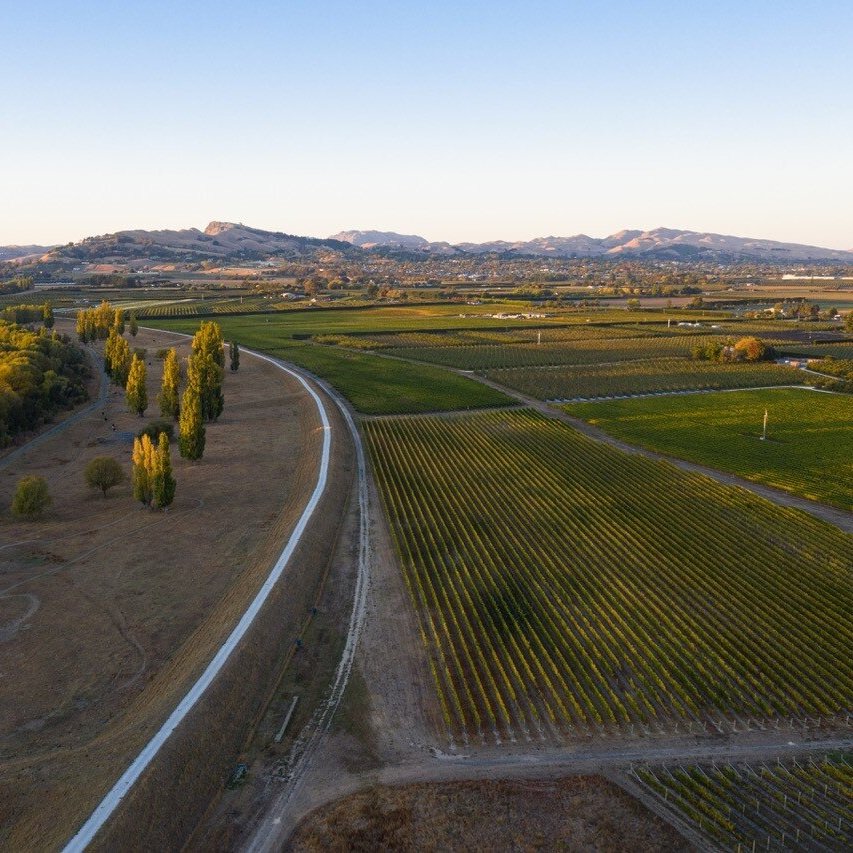We have access to approximately 19% of New Zealand’s total grape supply.
With over four thousand hectares stretched across Marlborough, Hawke’s Bay and Gisborne, we are the biggest grower and producer of New Zealand wine. As a leading production partner for wine retailers around the worlds, Indevin’s vineyards produce ten grape varieties and 12% of New Zealand’s annual output.
OUR REGIONS
Marlborough
Situated at the top of New Zealand’s South Island, with Cook Strait to the north and the Pacific Ocean to the east, Marlborough experiences a maritime climate.
CLIMATE
The region experiences some of the highest sunshine hours in the country which, coupled with the cooling maritime influence, gives the perfect environment for grape growing. Surrounding mountain ranges protect the region from wind and rain.
Hot days and cooler nights add to the complexity of fruit grown in Marlborough, especially the diurnal range of around 11 degrees during summer. It allows fruit to ripen slowly, ensuring intensity and natural high acidity.
SOILS
Key to Marlborough’s success is its ancient glacial deep, free-draining stony soils. The extensive interwoven river system left a threaded legacy of stony sandy loam over very deep gravels.
MARLBOROUGH SUB REGIONS
WAIRAU VALLEY
Wairau Valley vineyards are planted in the old, gravelly, riverbed soils of the Wairau River which now form the base of the Richmond Range. Naturally free-draining soils range from old stony riverbeds to fine, deep, alluvial soils produce wines that are riper, tropical and more pungent in style.
SOUTHERN VALLEYS
The Southern Valleys stretch across the valley floor and rise up towards the Wither Hills and Black Birch Range. Older, heavier clay soils hold more moisture. A majority of sites have good northerly orientation which assists ripening on this cooler, drier side of the Wairau Valley. This area provides a different flavour profile and structure due to the clay based soils.
AWATERE VALLEY
Awatere Valley - the driest, coolest, and windiest subregion - is dominated by its river and flood plains. Dramatic river terraces have been carved out, creating free draining sites with alluvial gravels along the banks of the river and clay and sandstone subsoils on the wider river plains. This terroir alongside cooler, windier conditions influence the profiles of wines produced here, with a more herbaceous and mineral style.
HAwke’s Bay
Hawke's Bay is one of the oldest wine regions in New Zealand and the second largest.
CLIMATE
It is very sunny and warm, similar to Bordeaux, the maritime influence tempers warm summer days and allows a long growing season.
The surrounding high country offers wind protection in some inland areas. Cooler, wet weather can occasionally pose problems in the growing season but free-draining soils help reduce its impact.
SOILS
Over thousands of years, four major Hawke's Bay rivers moved and formed valleys and terraces to create over 25 different soil types from clay loam, to limestone to sands and free draining gravels and red metal.
GISBORNE
Gisborne wine region is on the most easterly tip of New Zealand’s North Island, and revels in a maritime climate.
CLIMATE
The region is sheltered by hills and mountain ranges to the North and Northwest, Gisborne’s warm dry climate is moderated by the nearby ocean, with the cooling afternoon sea breezes. These breezes preserve natural acidity and tropical fruit flavours. This region has kind spring rainfalls and a long dry summer, in combination with soils, which allow dry farming of a wide range of grape varieties.
SOILS
Gisborne’s young soils with high moisture holding content are based on clays and fine silt loams, have the ability to amass very high levels of microbial activity. These balance the available nutrients to the plants so that the vines very seldom descend into a state of stress.









